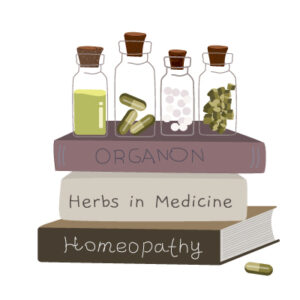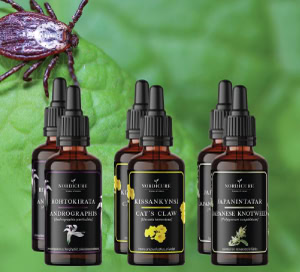Lyme disease is not simply an infection. It is a lens into the consequences of manipulating biology without accountability. As we confront the obfuscated crisis of Lyme and other chronic infections, it becomes evident that bioengineering in pathogens and genetic engineering in food are part of the same continuum of unregulated biotechnology. Both alter life’s blueprints, both evade oversight, and both are creating a legacy of ecological and human suffering.
 In her groundbreaking book, Bitten: The Secret History of Lyme Disease and Biological Weapons, science journalist Kris Newby details how US biowarfare research programs, including work at the Rocky Mountain Laboratories in Hamilton, Montana, experimented with spirochetes to alter virulence and transmission. The intention of these manipulations, although unclear, likely spawned Borrelia burgdorferi, the stealth pathogen now linked to millions of chronic infections worldwide. The same recombinant DNA methods used in agricultural GMOs were being applied in microbial genetics at the time.
In her groundbreaking book, Bitten: The Secret History of Lyme Disease and Biological Weapons, science journalist Kris Newby details how US biowarfare research programs, including work at the Rocky Mountain Laboratories in Hamilton, Montana, experimented with spirochetes to alter virulence and transmission. The intention of these manipulations, although unclear, likely spawned Borrelia burgdorferi, the stealth pathogen now linked to millions of chronic infections worldwide. The same recombinant DNA methods used in agricultural GMOs were being applied in microbial genetics at the time.
“When we manipulate genes for profit or power, the consequences ripple through ecosystems, our children, and future generations.”
Lyme rarely acts alone. It often coexists with Bartonella, Babesia, Ehrlichia, Mycoplasma, Rickettsiae, and viruses such as Powassan, all of which exacerbate inflammation and neuroimmune dysfunction. These infections disrupt the immune system through biofilm formation, cytokine storms, and molecular mimicry, while simultaneously impairing gut barrier integrity; a condition known as ‘leaky gut.’ This state of immune chaos parallels the chronic inflammation seen in individuals exposed to genetically engineered foods and glyphosate residues.
Despite their shared roots in biotechnology, genetically modified foods and engineered pathogens are regulated separately by the USDA, EPA, FDA, NIH, and DOD, none of which coordinate holistic biosafety. This fragmented oversight allows both agricultural and biomedical engineering to advance without unified accountability. The same regulatory capture that shields agri-tech corporations has also protected infectious disease gatekeepers, such as the Infectious Disease Society of America (IDSA), whose restrictive guidelines have left millions of chronic Lyme patients untreated.
Just as the FDA dismisses independent research on GMO toxicity, the IDSA dismisses clinicians and patients suffering from persistent Lyme. Both systems denied chronic exposure or chronic infection, labelled dissenting experts as “fringe,” protecting corporate and institutional interests over public health. The pattern created is systemic and taken directly from the GMO playbook: create complexity, deny chronicity, and suppress those questioning the government/corporate narrative.
Lyme Mythology
Lyme Disease is the modern plague that never shouldn’t have been. It is now one of the fastest-growing infectious diseases in the United States, with the CDC estimating up to 3 million cases annually when underreporting is considered.
Although black-legged ticks (Ixodes scapularis and I. pacificus) are the best-known carriers, Borrelia DNA has been detected in a variety of other insects, suggesting other forms of transmission. This fact is little known in mainstream medicine and leaves those with Lyme disease unclear as to how they were infected when consulting with their physicians who just believe that the tick is the only vector of Lyme.
The Multi-Vector Reality: Beyond the Tick
The following graph demonstrates that there are many other potential vectors of Lyme disease which should increase our awareness when facing those with multi- system complaints and health challenges.
| Insect | Evidence of BorreliaDNA | Proven Transmission to Humans | Comments |
| Strong | Yes | Primary vector | |
| Moderate | No | Possible mechanical transmission | |
| Moderate | No | Possible mechanical role | |
| Detected | No | Reservoir role in pets/rodents | |
| Rare | No | Wildlife vector potential | |
| Different Borrelia) | Yes (B. recurrentis, relapsing fever) | Demonstrates Borrelia versatility |
Sources: Schotthoefer & Frost, 2015; Franke et al., 2020; Eisen et al., 2017; Jaenson et al., 2019.
Integrative Framework
Healing requires more than antibiotics or symptom management. It demands restoration of biological integrity. Integrative and terrain-based approaches rebuild the immune system through microbial, nutritional, and energetic balance.
The gut-immune axis is central to Lyme’s chronicity. Dysbiosis from antibiotics, poor diet, and/or environmental toxins (e.g., glyphosate, heavy metals) compromises the gut-associated lymphoid tissue (GALT). Over 70% of immune function resides in the gut creating conditions where infections persist and autoimmunity originates.
Supporting terrain integrity is essential though the use of an organic regenerative diet with strict avoidance of glyphosate-contaminated foods (which destroy beneficial gut flora). Additionally, a whole foods based diet composed of increased polyphenols, flavonoids, healthy fats, and fiber are paramount to healing.
An integrative approach is necessary when helping those with Lyme disease and treatments stem from a multimodal tool box with suggestions outlined below:
 A. Homeopathy
A. Homeopathy
- Borrelia nosode, Ledum palustre, Rhus tox, Arnica, Hypericum; target bite reactions, neuralgia, and post-infectious symptoms.
- Classical prescribing based on total symptom picture yields the best outcomes.
- Other forms of homeopathics are available using graded potencies of nosodes.
B. Botanical Medicine
 Stephen Buhner’s protocols:
Stephen Buhner’s protocols:- Japanese Knotweed (Polygonum cuspidatum) – anti-inflammatory, anti-biofilm
- Cat’s Claw (Uncaria tomentosa) – immune modulation
- Andrographis paniculata – antimicrobial and hepatoprotective
- Cryptolepis sanguinolenta, Sida acuta, Houttuynia cordata – target Babesia/Bartonella
C. Pharmaceuticals (judicious use)
- Doxycycline, azithromycin, cefuroxime as first-line antibiotics
- Pulsed therapy and biofilm-busters (e.g., lumbrokinase, NAC – precursor to make glutathione) may enhance eradication.
- Prescribed courses of antibiotics may be required to match the life cycles (“hatching”) of the organisms.
D.  Scalar Frequencies and Energy Medicine
Scalar Frequencies and Energy Medicine
- Scalar frequency therapy targets microbial resonance patterns.
- Anecdotal evidence suggests improved microcirculation and biofilm disruption, especially when combined with darkfield microscopy to monitor live blood response.
E. Dietary Approach
- Anti-inflammatory and low-glycemic diet: eliminates gluten, dairy, refined sugar, processed oils.
- Mitochondrial repair foods: wild-caught salmon, greens, turmeric, garlic, and fermented vegetables.
- Detox supports: binders (chlorella, bentonite, zeolite), hydration, and mineral repletion.
Lyme disease and GMOs are two sides of the same coin: both are products of bioengineering without unified oversight. The divisions between medicine, agriculture, and ecology are artificial constructs designed to prevent systemic accountability. It is time for a single, transparent biosafety authority to govern all forms of genetic manipulation whether in crops, microbes, or human therapeutics. Without this unified oversight, we risk repeating the same errors across domains of life.
The Lyme crisis underscores the failure of reductionist science. True progress will come not from more gene editing, but from restoring harmony between humans and nature. The same integrative principles that heal the body can guide a regenerative approach to science and policy. Only by uniting medicine, agriculture, and ecology under one ethical framework can we safeguard life’s integrity.
References
- Newby, K. (2019). Bitten: The Secret History of Lyme Disease and Biological Weapons. Harper
- (2023). Estimated annual number of Lyme disease cases in the US.
- Schotthoefer, A. M., & Frost, H. M. (2015). Ecology and epidemiology of Lyme borreliosis. Clinical Microbiology Reviews, 28(4).
- Franke, J. et al. (2020). Non-tick transmission of Borrelia: Myth or possibility? Vector-Borne and Zoonotic Diseases, 20(2).
- Buhner, S. H. (2013). Healing Lyme. Raven Press.
- Cameron, D. J., Johnson, L., & Maloney, E. L. (2014). Evidence assessments and guideline recommendations in Lyme disease. Expert Review of Anti-Infective Therapy, 12(9).
- Sapi, E. et al. (2016). Evaluation of in vitro antibiotic susceptibility of Borrelia burgdorferi Frontiers in Microbiology, 7.
- ILADS Guidelines. (2018).

 A. Homeopathy
A. Homeopathy Stephen Buhner’s protocols:
Stephen Buhner’s protocols: Scalar Frequencies and Energy Medicine
Scalar Frequencies and Energy Medicine

